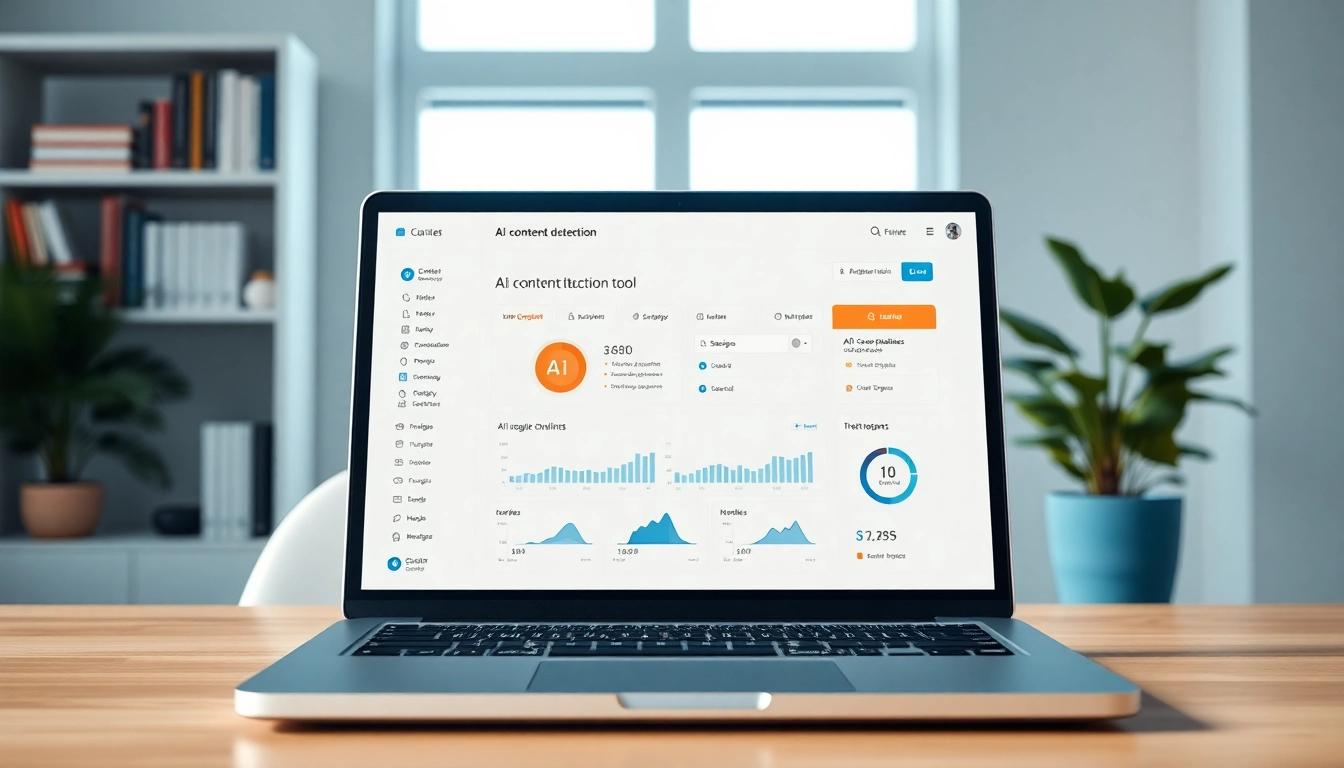Understanding AI Checkers: What They Are and How They Work
Definition of an AI Checker
An AI checker is a specialized software tool designed to assess the origin of textual content, determining whether it was generated by an artificial intelligence model or written by a human. These tools utilize sophisticated algorithms to analyze a variety of factors, such as syntax, semantics, and stylistic patterns, to identify characteristics typical of AI-generated text. By employing methodologies ranging from machine learning techniques to linguistic analysis, AI checkers provide a degree of reliability in distinguishing between human and AI content.
Key Features of AI Checkers
When choosing an AI checker, it’s essential to consider its key features that can enhance your overall experience:
- Text Analysis: AI checkers analyze the writing style, language patterns, and complexity of sentences to identify potential AI authorship.
- Multi-Model Support: Many AI checkers can identify content generated by various platforms and models such as ChatGPT, GPT-4, and more.
- Real-Time Detection: Immediate feedback allows users to take prompt action to refine their content.
- Plagiarism Detection: Some AI checkers also perform parallel plagiarism checking, ensuring content originality.
- User-Friendly Interface: A well-designed interface that guides users through the detection process enhances usability.
Benefits of Using AI Checkers
The integration of AI checkers into content creation workflows has numerous benefits:
- Ensuring Authenticity: AI checkers help maintain the integrity of written content, reducing the likelihood of unintentional plagiarism or misrepresentation.
- Enhancing Credibility: Writers can bolster their credibility by guaranteeing that their submissions are exclusively human-generated.
- Efficiency: AI checkers streamline editing processes, enabling writers to focus on crafting high-quality content rather than worrying about the implications of AI involvement.
- Compliance and Ethics: Using AI checkers assists institutions and businesses in adhering to ethical guidelines surrounding AI usage in writing.
Types of AI Content Detection Tools
Plagiarism Checkers vs. AI Checkers
While both plagiarism checkers and AI checkers serve to safeguard content integrity, their functions diverge significantly. Plagiarism checkers primarily focus on detecting copied content across the internet or databases, whereas AI checkers analyze text to ascertain its authorship. The key distinction is that plagiarism tools often rely on databases of existing work, while AI checkers employ advanced linguistic algorithms to evaluate writing styles.
Specialized AI Checkers for Different Platforms
There are various AI checkers tailored to different platforms and models, each employing unique detection methods. For example, ai checker tools like ZeroGPT focus on identifying content generated by specific AI models such as ChatGPT and OpenAI’s latest iterations. Specialized checkers are advantageous for educators and publishers who need to meet stringent standards for originality and human authorship.
Comparing Free vs. Paid AI Checkers
Choosing between free and paid AI checkers often comes down to the intended use and required features:
- Free AI Checkers: Typically offer basic features suitable for casual users or educational purposes but may lack advanced capabilities like deep linguistic analysis or multiple language support.
- Paid AI Checkers: Often provide comprehensive features, including in-depth analysis tools, higher accuracy rates, and extensive model support, which are essential for professional writing environments.
Choosing the Right AI Checker for Your Needs
Evaluating Accuracy and Reliability
Accuracy is paramount when selecting an AI checker. High-quality tools are capable of minimizing false positives—instances where human-written content is misidentified as AI-generated. Additionally, reliable AI checkers should undergo regular updates and improvements to maintain their efficacy in recognizing new AI outputs.
User Experience and Interface Design
A well-structured user interface enhances usability, which is particularly important for less tech-savvy individuals. Consider whether the tool offers an intuitive layout, clear instructions, and accessible support options for troubleshooting.
Cost Considerations and Subscription Models
Cost can be a deciding factor for many users. AI checkers typically offer various subscription models, including monthly, annual, and even pay-per-use options. Evaluating potential return on investment is essential, especially for businesses and educational institutions that may require bulk usage.
Best Practices for Utilizing an AI Checker
Integrating AI Checkers into Your Workflow
To maximize the effectiveness of AI checkers, incorporate them seamlessly into your content creation process:
- Pre-Submission Checks: Utilize AI checkers as a final review before submitting work for publication, ensuring authenticity and adherence to guidelines.
- Regular Training: For educational institutions, consider implementing AI checkers as part of training sessions for students and staff, enhancing awareness of ethical writing practices.
- Feedback Loops: Encourage users to provide feedback on detection outcomes, facilitating tool improvement and optimization.
Understanding Limitations of AI Checkers
Despite their advantages, AI checkers have limitations. No tool can guarantee absolute accuracy; thus, it is prudent to use these checkers as part of a comprehensive review process, rather than as standalone solutions. Factors such as nuanced language, creative writing styles, and AI’s continuous evolution may lead to detection challenges.
Improving Content Authenticity with AI Checkers
AI checkers can significantly enhance the originality of content. Consider these strategies:
- Regular Audits: Use AI checkers routinely to audit existing content, making necessary adjustments to maintain its integrity.
- Content Workshops: Organize workshops to educate teams on producing original content and leveraging AI tools for better outcomes.
Future of AI Checkers and Content Authenticity
Advancements in AI Detection Technology
The future of AI checkers is promising, with ongoing advancements in technology leading to more sophisticated detection algorithms. Future developments may include the integration of deeper contextual understanding, enabling AI checkers to better discern between complex creative writing and AI creations. Such advancements would greatly enhance user trust in the outputs of these tools.
Impact on Education and Professional Writing
The rise of AI checkers holds significant implications for educational institutions and professional writing industries. As these tools become more integrated into academic settings, they can help uphold standards of originality and ethical writing practices. Educational programs may increasingly teach students how to interact with AI systems effectively, preparing them for future workplace challenges.
Ethical Considerations in AI Content Creation
With the proliferation of AI in writing and content creation, ethical considerations become paramount. Issues such as transparency, authorship, and accountability must be addressed. AI checkers can play a vital role in this discourse by helping to demarcate human effort from AI-generated contributions, thereby contributing to a more responsible and ethical approach to content creation.



